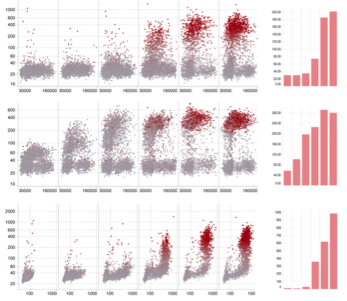Cellular resilience to DNA replication stress

Genome duplication for cell division is an enormous undertaking and a major source of cancer-associated genome instability. Moreover, the replication machinery is a common target in certain cancer therapies that aim at generating elevated levels of replication stress in rapidly dividing cells. We are interested in the cellular mechanisms that define the replication capacity of cells and determine their natural resilience to replication stress. When key factors become limiting, cells cannot maintain a stable replication program, resulting in a catastrophic shattering of the genome. Using automated multi-parameter cell imaging, we strive to identify novel modulators of replication stress resilience and characterize their molecular functions.
Further reading:
Panagopoulos & Altmeyer
The Hammer and the Dance of Cell Cycle Control
Trends Biochem Sci. 2021 Apr;46(4):301-314.
Lezaja & Altmeyer
Dealing with DNA lesions: When one cell cycle is not enough
Curr Opin Cell Biol. 2021 Jun;70:27-36.
Lezaja et al.
RPA shields inherited DNA lesions for post-mitotic DNA synthesis
Nat Commun. 2021 Jun 22;12(1):3827.
Gatti et al.
The Ubiquitin Ligase TRIP12 Limits PARP1 Trapping and Constrains PARP Inhibitor Efficiency
Cell Rep. 2020 Aug 4;32(5):107985.
Teloni et al.
Efficient Pre-mRNA Cleavage Prevents Replication-Stress-Associated Genome Instability
Mol Cell. 2019 Feb 21;73(4):670-683.e12.

